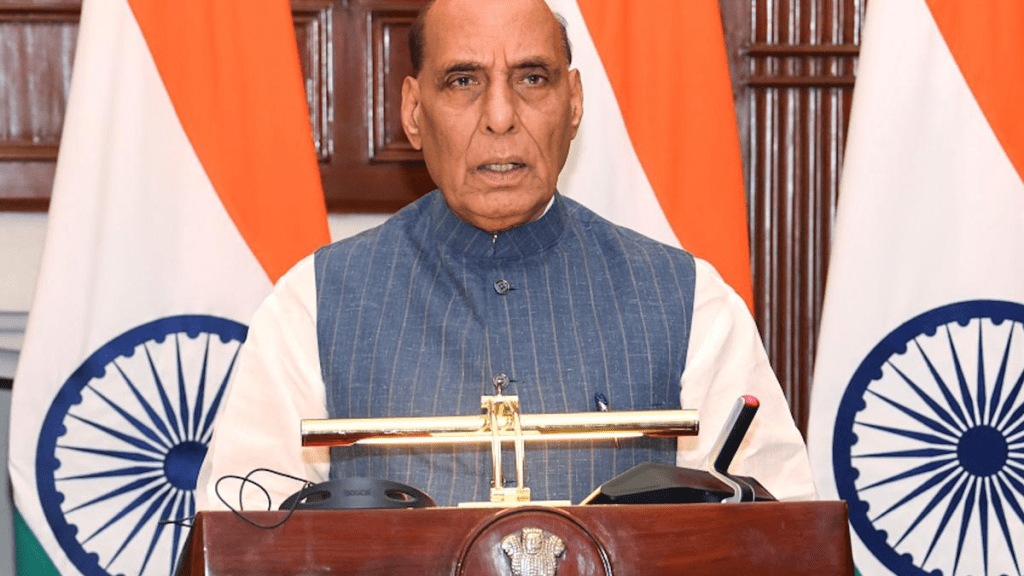Upon the invitation of US Secretary of Defence Lloyd Austin, Defence Minister Rajnath Singh is scheduled to visit the United States from August 23-26, 2024. This visit is significant in the context of enhancing the India-US Comprehensive Global Strategic Partnership, following the recent Voice of Global South Summit and in anticipation of Prime Minister Narendra Modi’s visit to the US in September.
Objectives and Key Outcomes
As reported previously by FinancialExpress.com, a central focus of Singh’s visit will be addressing delays in crucial defence deals that impact India’s military modernization efforts. The most pressing issue is the delay in the delivery of General Electric’s (GE) F404 engines, essential for the Tejas Mark-1A fighter jets. These delays have impeded Hindustan Aeronautics Limited (HAL) from meeting its production targets for the Indian Air Force (IAF). Singh is expected to press for accelerated delivery of these engines to ensure that HAL can adhere to its schedule and fulfil its commitments.
Singh’s visit also aims to finalize several high-profile defence deals. Notably, the multi-billion-dollar agreements for 31 MQ-9B High Altitude Long Endurance (HALE) unmanned aerial vehicles (UAVs) and the license production of the GE F414 engine in India are nearing conclusion. The MQ-9B deal, estimated at approximately US$3.99 billion, includes 15 Sea Guardians for the Indian Navy and 16 Sky Guardians for the Indian Army and Air Force. Recent amendments to the deal have increased the indigenous content, reflecting a commitment to boosting local defence capabilities.
Expanding Defence and Technological Collaborations
Beyond resolving these critical issues, Singh’s visit will emphasize expanding defence cooperation and technological partnerships. The minister will meet with representatives from major defence firms in Tennessee, including Northrop Grumman and L3 Harris. Discussions will focus on advancing collaboration in areas such as artificial intelligence (AI), semiconductor manufacturing, and space situational awareness.
The visit will also explore co-production opportunities for key defence platforms. India is interested in co-producing the Javelin anti-tank guided missile and the Stryker armoured personnel carrier, which would enhance its ground combat capabilities. Additionally, the joint production of the GE F414 jet engine, which will power the Tejas Mark-2 fighter jets, aligns with India’s goal of advancing its domestic defence manufacturing capabilities under the ‘Atmanirbhar Bharat’ initiative.
The discussions are also expected to cover the search for a Medium Transport Aircraft (MTA) for the Indian Air Force (IAF). According to sources in the defence and security establishment, the IAF is in the process of assessing the responses it received for the RfI it had issued for the MTA; following which the RfP is expected to be issued in 2025.
Strategic Implications and Future Prospects
Singh’s visit comes at a time of increased strategic alignment between India and the US, particularly in the Indo-Pacific region. The discussions are expected to address broader strategic and geopolitical concerns, setting the stage for further collaboration and strengthening the bilateral relationship.
The outcomes of Singh’s visit are anticipated to play a crucial role in shaping the future of India-US defence ties. The visit will not only address immediate concerns related to defence deals but also lay the groundwork for ongoing and future cooperation in high-tech areas. As the two countries prepare for Prime Minister Modi’s visit in September for the United Nations Summit of the Future in New York, Singh’s discussions will be instrumental in advancing the strategic partnership and addressing regional security challenges.
In summary, Defence Minister Rajnath Singh’s visit to the US is a key opportunity to resolve critical issues, advance major defence deals, and strengthen the strategic partnership between India and the US. The visit aims to address current delays, explore new areas of collaboration, and enhance the overall defence and technological relationship between the two nations.
